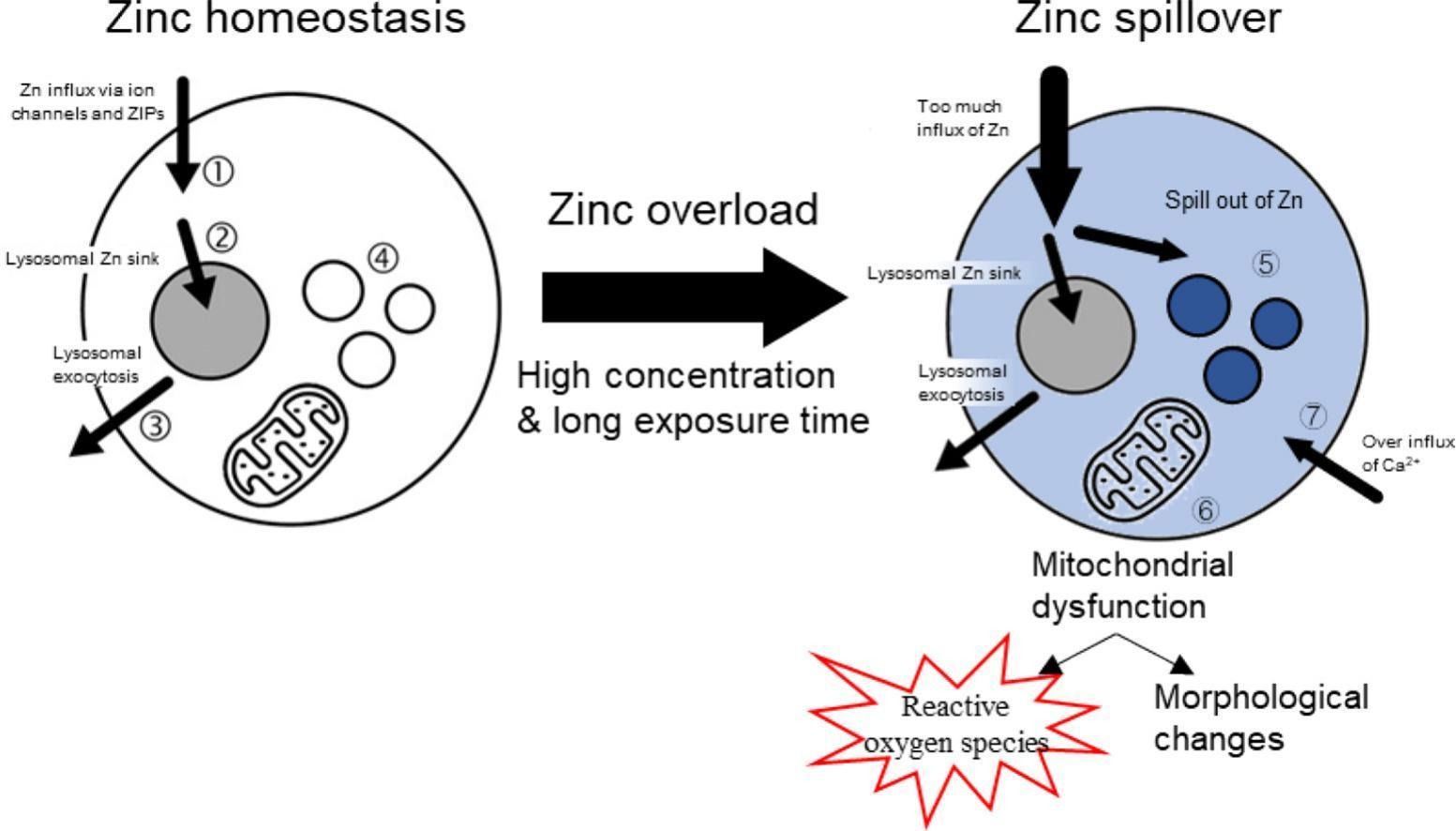Involved Member: Prof. Wenxiong WANG
This study investigated the subcellular trafficking of zinc ions (Zn) in fin cells of rabbitfish. The results showed that the toxicity and bioaccumulation of Zn were both dose- and time-dependent. Cellular homeostasis was maintained at lower Zn concentrations, but disruptions occurred at higher concentrations (>200 μM) and longer exposure time. Lysosomes played a crucial role in Zn regulation during the initial exposure period, storing Zn and exhibiting increased activity. However, beyond a certain threshold, Zn spillover occurred, affecting other cellular organelles, particularly mitochondria. This Zn-induced damage to mitochondria led to morphological changes, increased production of reactive oxygen species, and decreased cell viability. The study also found that the amount of Zn in mitochondria served as a reliable predictor of Zn toxicity in fish cells.
Reference:
Xia, Y., Tsim, K.W., Wang, W.X., (2023). How fish cells responded to zinc challenges: Insights from bioimaging. Science of The Total Environment, 875, 162538. (impact factor: 10.754)
